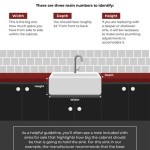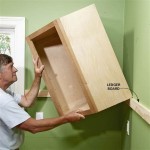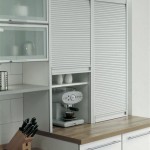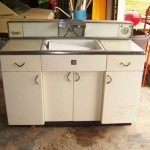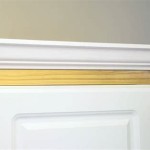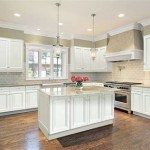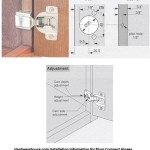How Do You Fix Kitchen Cabinets To The Wall?
Kitchen cabinets are a crucial part of any kitchen, providing storage and organization for all your culinary essentials. While installing kitchen cabinets might seem daunting, it's a manageable task with the right tools and techniques. One important aspect of the installation process is securely attaching the cabinets to the wall. This ensures stability, prevents them from tipping over, and contributes to the overall safety and functionality of your kitchen.
There are several methods for fixing kitchen cabinets to the wall, each suited for different cabinet types, load requirements, and wall material. This article will delve into the common methods used, providing step-by-step guidance to help you achieve a sturdy and professional installation.
Understanding Cabinet Types and Wall Materials
The method used to fix cabinets to the wall largely depends on the type of cabinets and the material of the wall. Kitchen cabinets come in various styles, with some designed for hanging and others for base installations. Hanging cabinets are typically lighter and are attached to the wall using screws and specialized brackets, while base cabinets are heavier and are secured to the floor and wall using adjustable legs and screws.
The wall material also plays a significant role. Drywall, a common wall material, requires specialized fasteners that can hold weight securely. Concrete or brick walls, on the other hand, often necessitate using concrete anchors or specialized drill bits for a firm hold. Knowing the type of cabinets and the wall material will help you choose the appropriate tools and techniques for a successful installation.
Methods for Fixing Kitchen Cabinets to the Wall
Here are some of the most common methods for fixing kitchen cabinets to the wall:
1. Using Screws and Brackets
This method is commonly used for hanging cabinets and involves attaching brackets to the wall using screws and then hanging the cabinet onto the brackets. The brackets come in various sizes and configurations, allowing you to adjust the height of the cabinet and ensure a secure fit. This method is suitable for drywall, plywood, and other relatively solid wall materials.
Here's how to install cabinets using screws and brackets:
- Determine the location for the cabinet and mark the wall using a level.
- Install the brackets at the marked locations, ensuring they are securely attached to the wall studs or using toggle bolts for drywall.
- Attach the cabinet to the brackets using screws, ensuring a snug fit.
2. Using Shelf Supports
Similar to using brackets, shelf supports are often used for lighter cabinets, particularly those that are not meant to hold heavy items. Shelf supports are typically made of metal and are designed to provide a sturdy base for the cabinet to rest upon. They are attached to the wall using screws or anchors, depending on the wall material.
Here's how to install cabinets using shelf supports:
- Determine the location for the cabinet and mark the wall using a level.
- Install the shelf supports at the marked locations, ensuring they are securely attached to the wall studs or using toggle bolts for drywall.
- Rest the cabinet on the shelf supports, ensuring a snug fit.
3. Using Toggle Bolts
Toggle bolts are a type of fastener specifically designed for drywall. They consist of a wing-shaped toggle that expands behind the drywall once the bolt is tightened, creating a secure anchor. Toggle bolts are ideal for heavy cabinets or those requiring a strong hold, as they provide greater holding power compared to standard screws.
Here's how to install cabinets using toggle bolts:
- Determine the location for the cabinet and mark the wall using a level.
- Drill a pilot hole slightly larger than the diameter of the toggle bolt.
- Insert the toggle bolt into the pilot hole and tighten the screw, causing the toggle to expand behind the drywall.
- Attach the cabinet to the toggle bolt using the appropriate screws.
4. Using Concrete Anchors
Concrete anchors are used to secure cabinets to concrete or brick walls. They are usually made of metal or plastic and come in various sizes and shapes. Concrete anchors create a secure hold by expanding within the drilled hole in the wall, providing a strong anchoring point for the cabinet.
Here's how to install cabinets using concrete anchors:
- Determine the location for the cabinet and mark the wall using a level.
- Drill a pilot hole into the concrete or brick wall, using a suitable drill bit.
- Insert the concrete anchor into the hole and tap it gently until it is flush.
- Attach the cabinet to the concrete anchor using the appropriate screws.
Tips for a Successful Installation
To ensure a successful and stable installation of your kitchen cabinets, here are some valuable tips to keep in mind:
- Use a level to ensure that the cabinets are installed straight and at the desired height.
- Check for studs before drilling into the wall, as this provides the most secure attachment point.
- Use the right tools for the job, ensuring you have a drill, screwdriver, and other necessary tools in good working order.
- Pre-drill holes before driving screws into the wood to prevent splitting.
- Measure twice, cut once to ensure precise measurements and accurate placement of the cabinets.
- Securely attach all brackets, supports, and fasteners to ensure a stable and lasting installation.
By following these tips and choosing the appropriate method based on your cabinet type and wall material, you can achieve a professional and secure installation for your kitchen cabinets, creating a functional and aesthetically pleasing space for years to come.

How To Install Kitchen Cabinets Diy Family Handyman

How To Install Cabinets Like A Pro The Family Handyman

Fitting Kitchen Units On Uneven Walls Has Never Been Easier

Wall Unit Fitting Adjustments Diy Kitchens Advice

How To Install Kitchen Cabinets The Wall And Floor With Ease

How To Install Kitchen Cabinets The Wall And Floor With Ease

How To Install Kitchen Wall Cabinets Lowe S

How To Install A Wall Unit In Your Kitchen

This Is How You Should Fix Heavy Cabinets To Plasterboard Wall

How To Install Kitchen Cabinets The Wall And Floor With Ease
Related Posts

